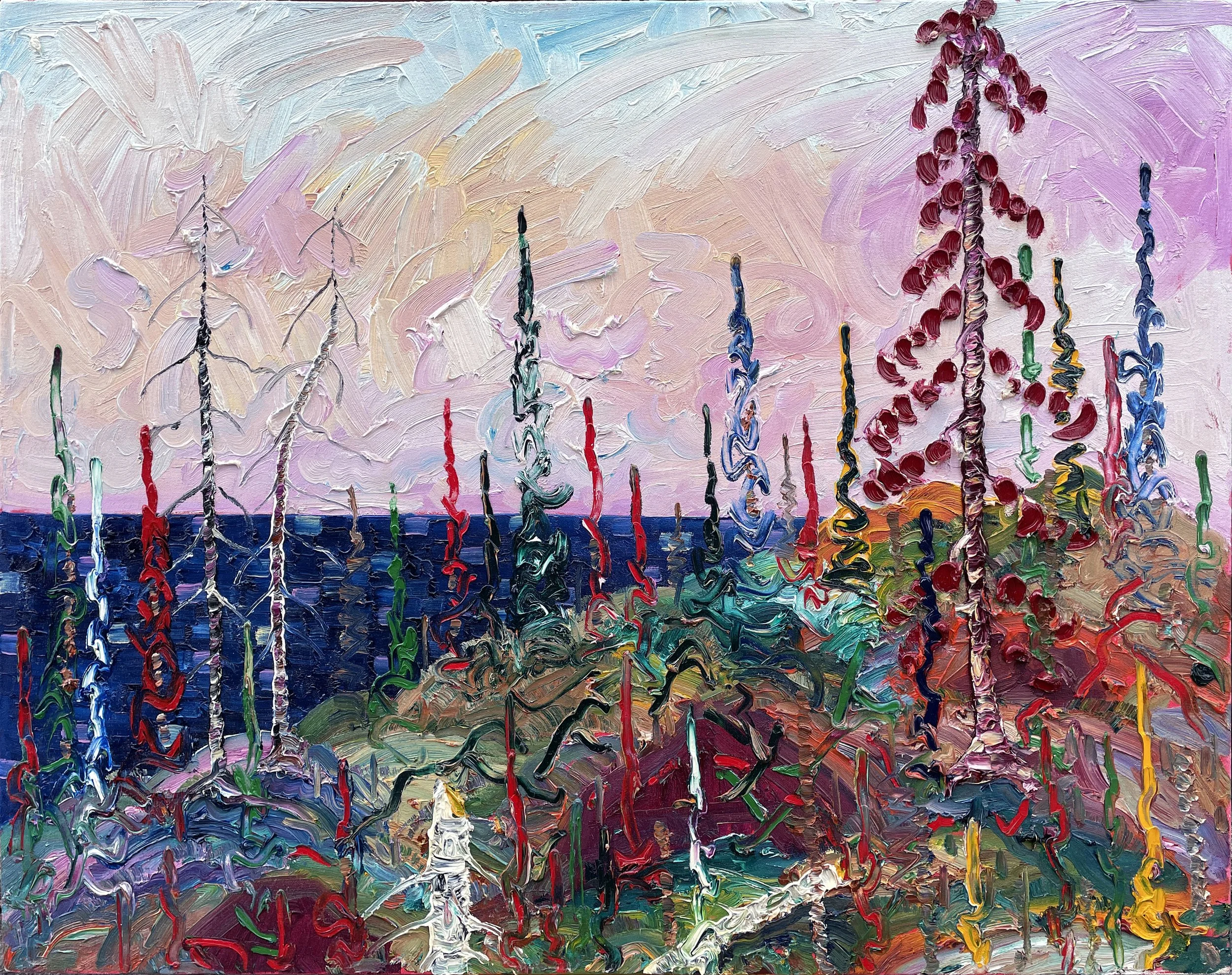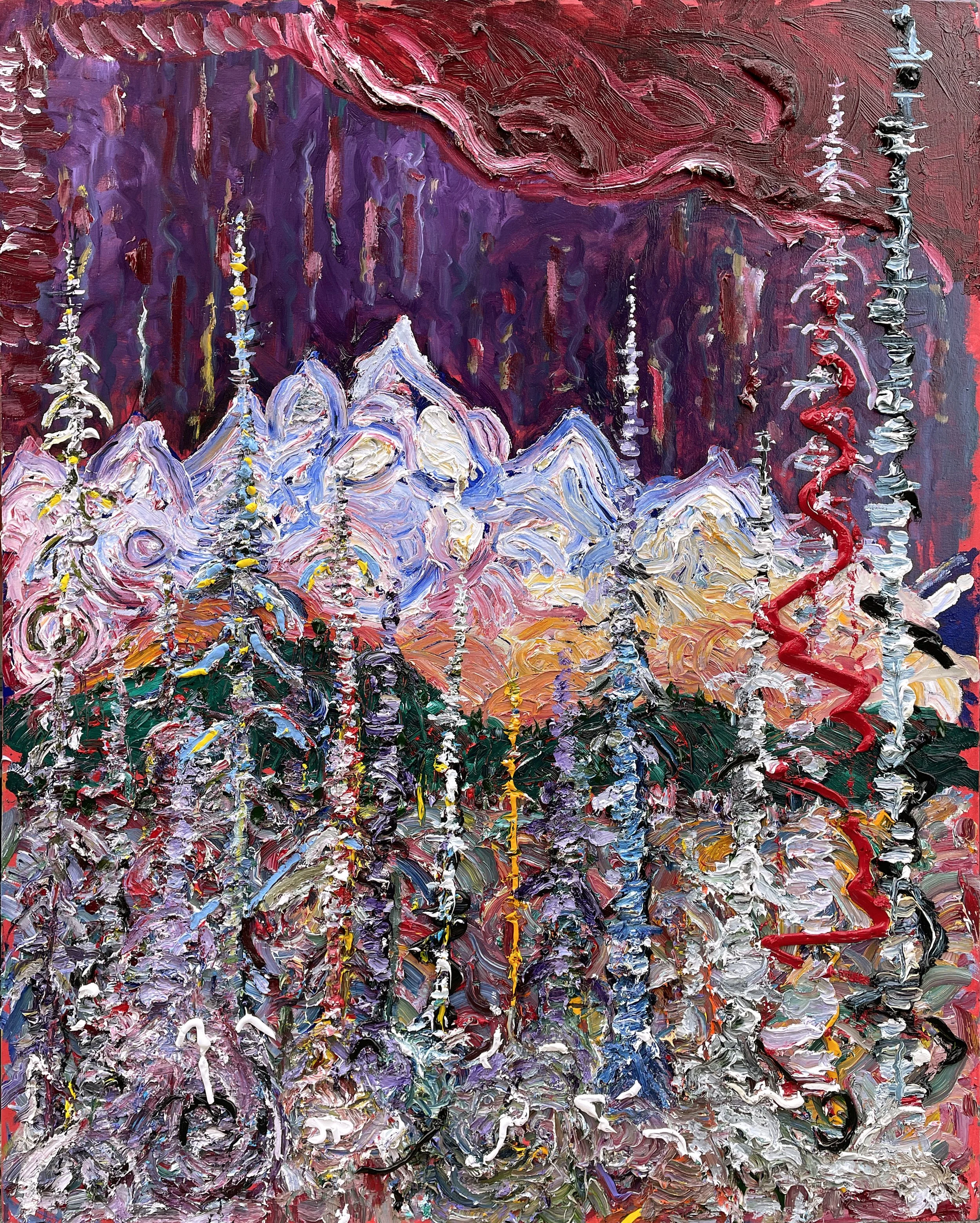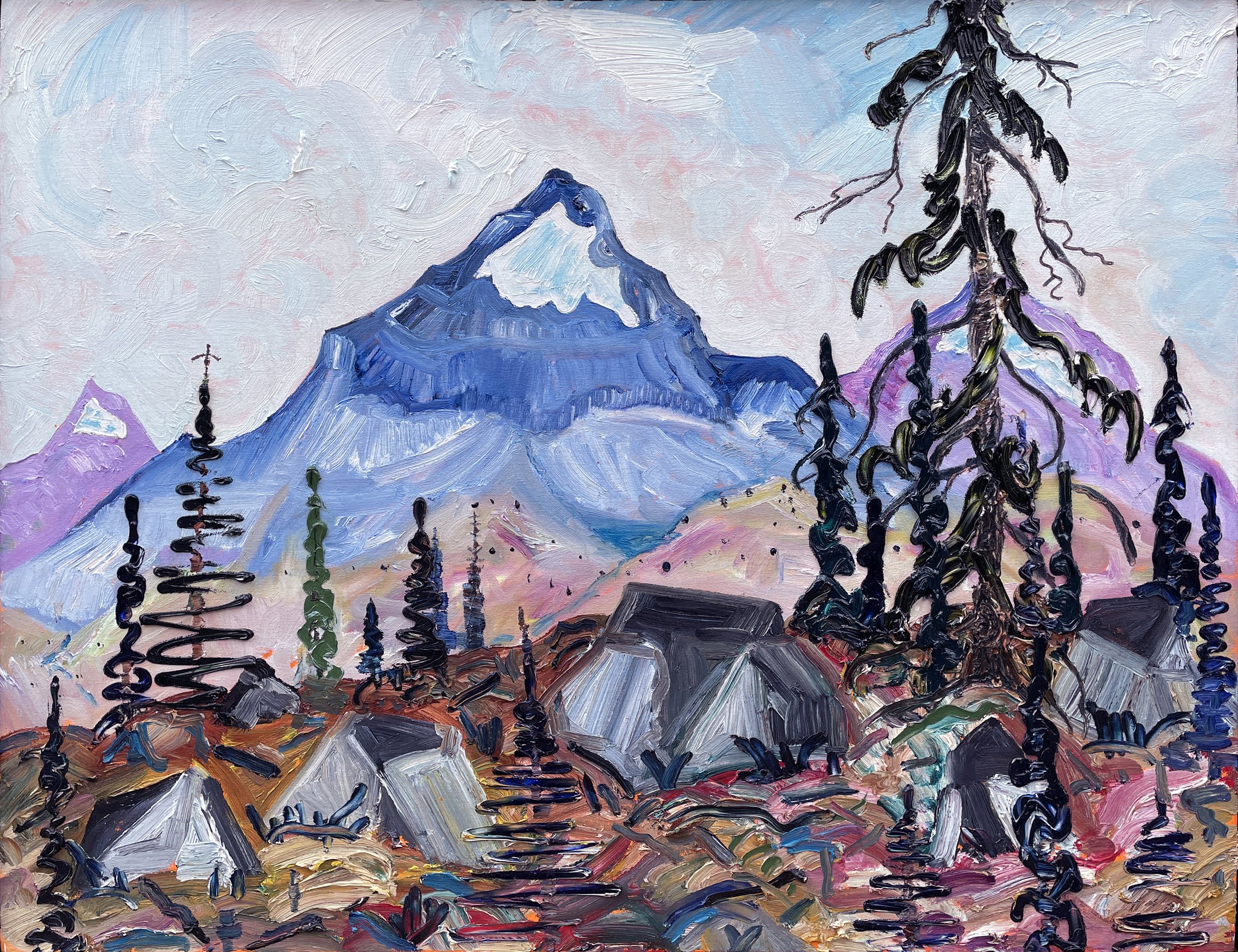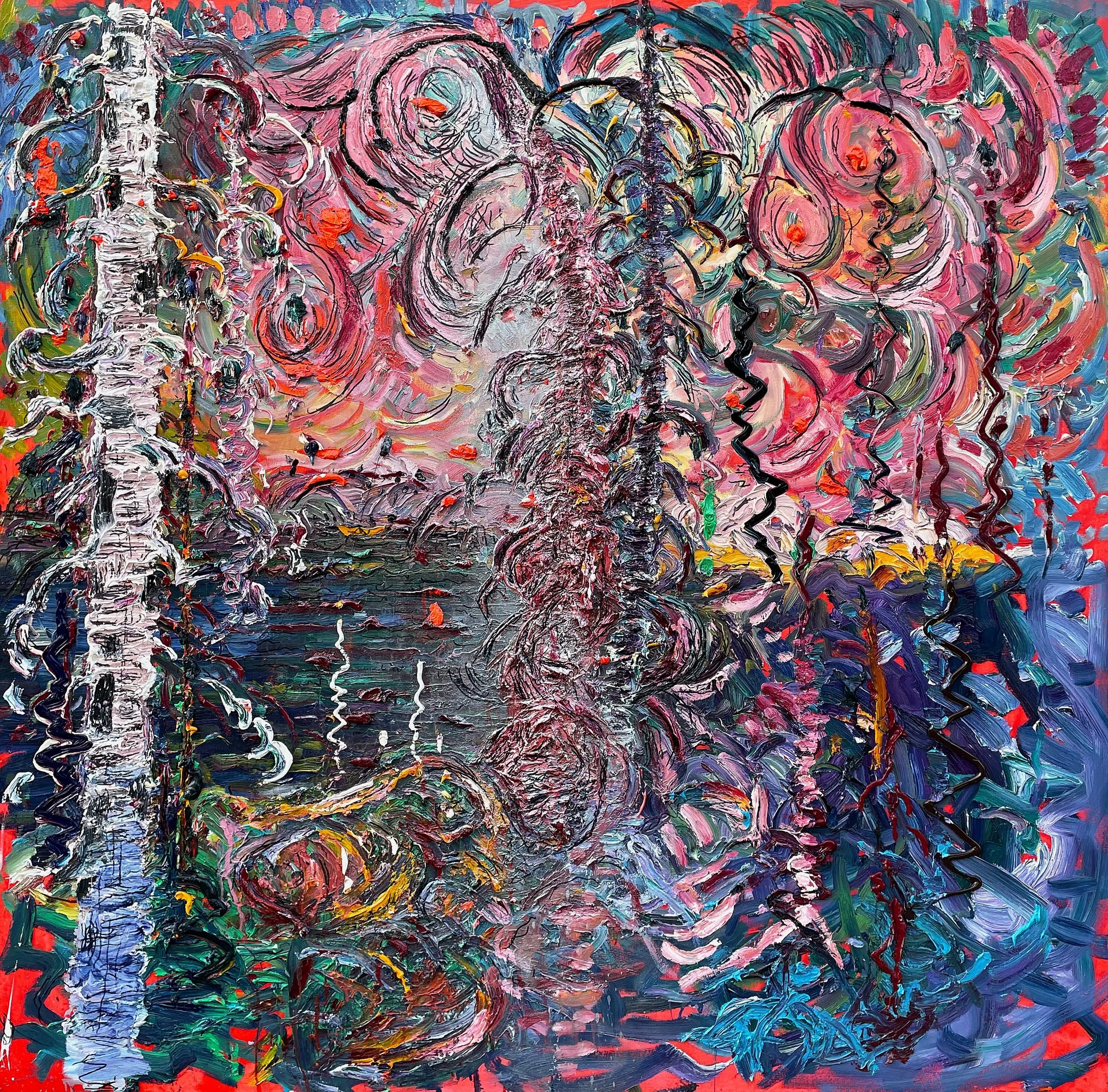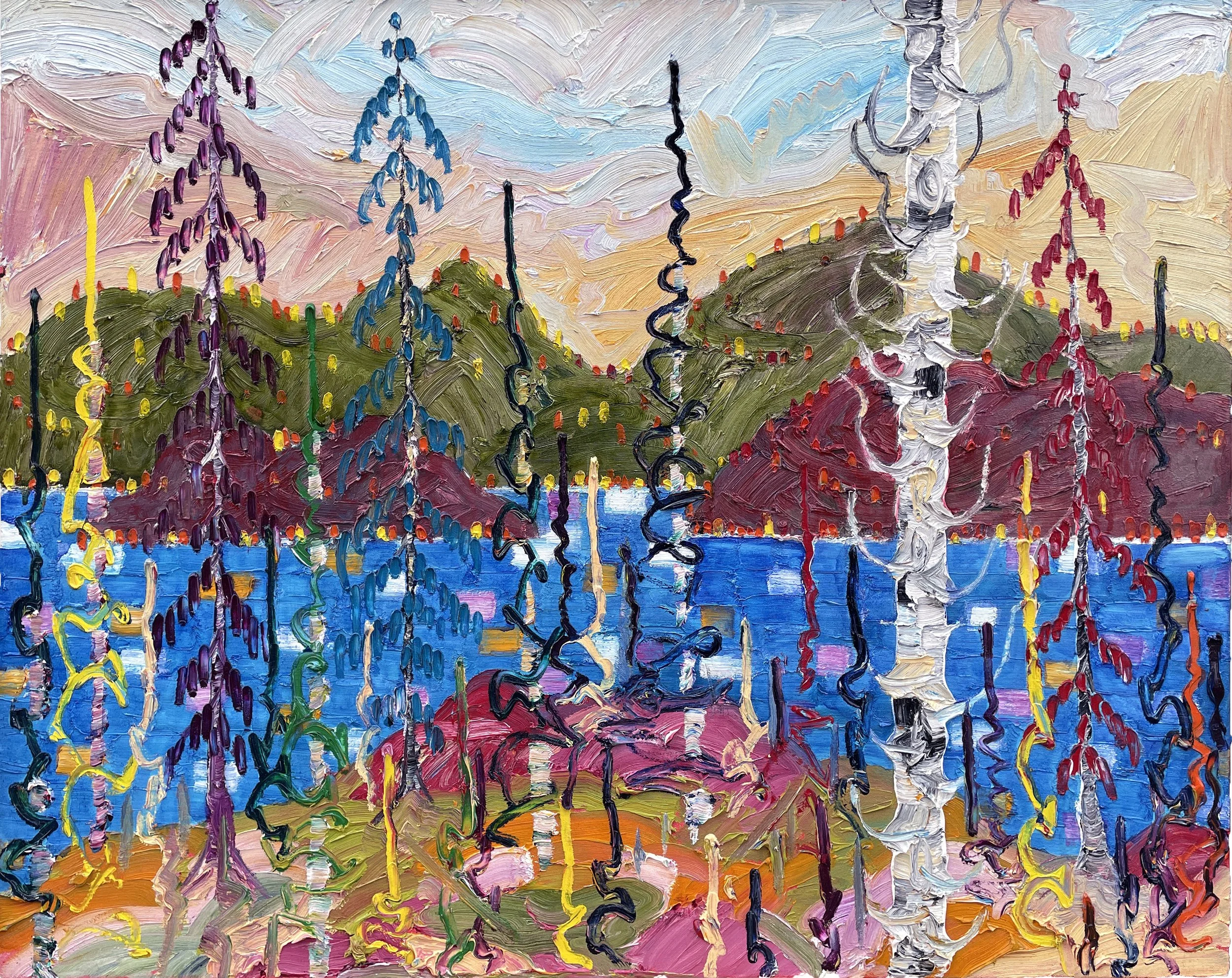Alex Cameron
A photo of Alex Cameron in his studio, taken by Jeff Nolte.
To simply say that Alex Cameron paints landscapes is like saying that Henry Moore sculpted women. What the great English artist did was redefine the human body, and what Cameron does is no less of a creative tour deforce. Wilderness, more than nature, is this Toronto-based artist’s muse. A touch of Fauvism is at the root of his pictorial expression, as is abstract expressionism which he discovered while in New York. Influenced by Canadian artist Jack Bush, for whom Cameron worked as a studio assistant in the late 70s, he has opted for a semi-abstract style entirely his own, both in execution and narrative.
But what exactly is ‘abstract art’? A bit like the overused term ‘avant-garde’, it has lost its meaning in the world of contemporary, conceptual, modern, you name it, art. It can, and does, come in many forms, and perhaps the only thing in common is the focus on line, form, and colour as the primary creative drive, at the ‘expense’, one may say, of the subject matter, which, to put it plainly, becomes ‘abstracted’, ergo taken out of reality.
While Jackson Pollock dripped and dribbled paint onto canvas, Cameron squeezes entire tubes of oils, creating paintings that verge on bas-reliefs. This thick, almost brutal impasto application is at the heart of his creative process; unencumbered, obsessive, marvellous in its abandon.
But what is he painting? The powerful Canadian landscape insinuates itself forcefully into his compositions, yet it is subverted by Cameron’s audacious, irreverent rendition. Once the overwhelming plasticity of his paintings is absorbed, a lyrical, almost nostalgic harking makes itself felt. An otherworldly meditation on nature, and the ‘nature’ of artistic expression, is at the heart of his art.
The three-dimensionality of Cameron’s paintings is impossibly tactile, and the viewer is forced to approach and back off, over and over, in order to wholly appreciate, understand, this complex visual lexicon. Alex Cameron is unapologetic in his expression and for a good reason. He lets his paintings do the talking, and they are not shy. They stand their ground as forcefully as the landscape they define, and re-define ad infinitum...




